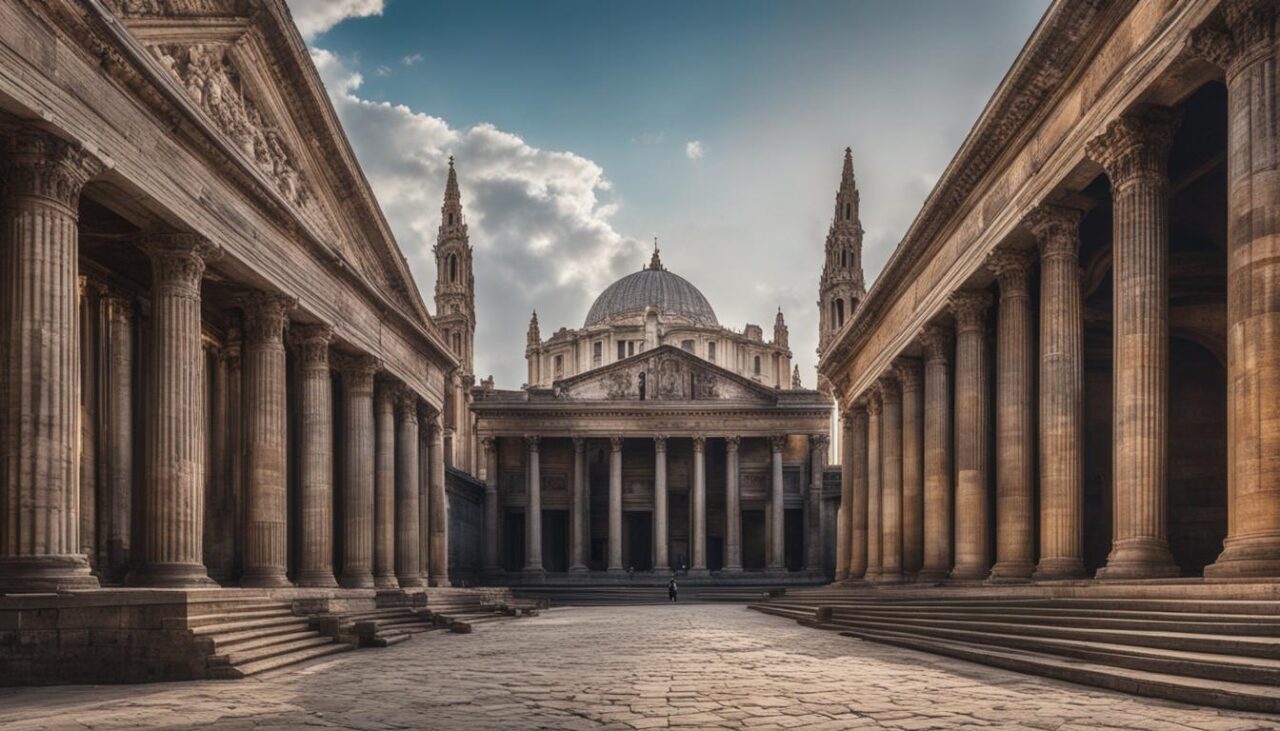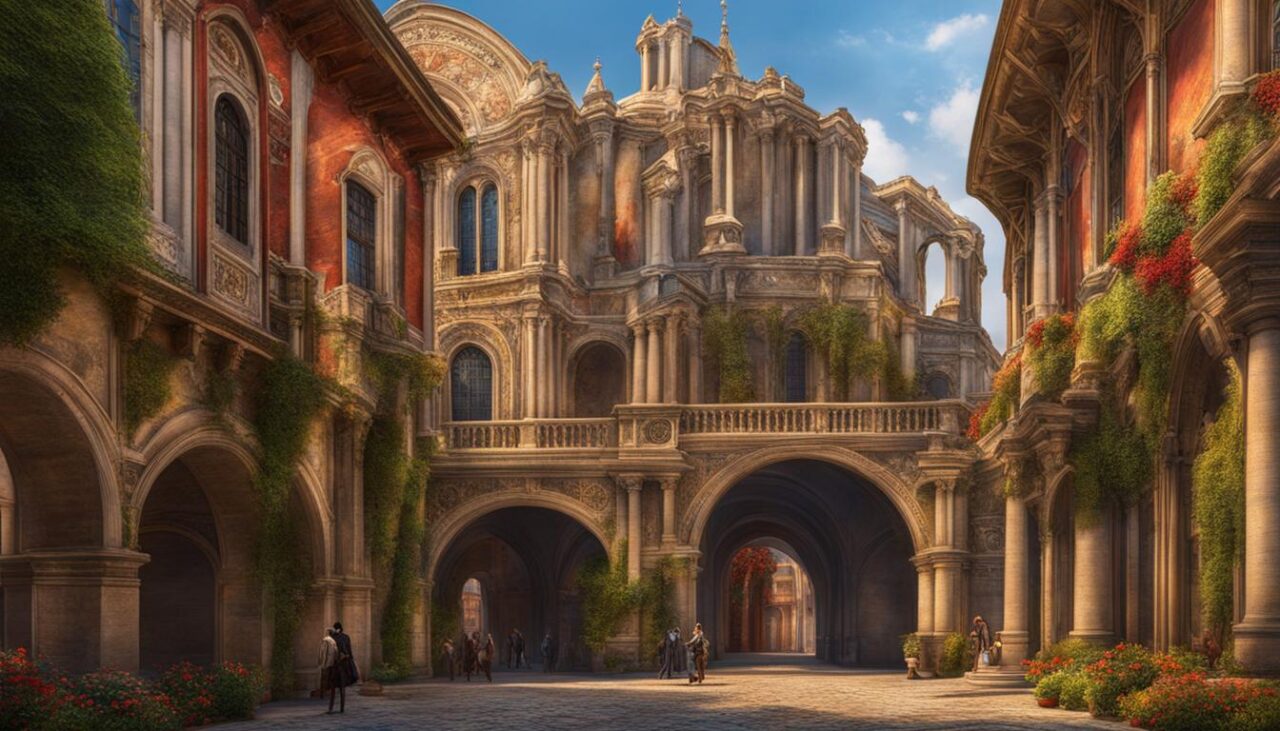Europe is a continent rich in history, traditions, and cultural diversity. Its fascinating heritage has contributed significantly to world culture. European culture encompasses a tapestry of different customs, languages, and art forms, all of which form a unique identity for each European country. This section will provide a brief introduction to the intricate and enchanting world of European culture.
Key Takeaways:
- European culture is rich in history, traditions, and cultural diversity.
- Each European country has a unique identity shaped by its customs, languages, and art forms.
- Understanding European culture is essential to gain a deeper insight into the collective identity of its people and their shared values.
Exploring European Traditions and Festivals
European culture is richly diverse, and one of the best ways to experience it within different European countries is through its timeless traditions and lively festivals. These cultural practices showcase the unique customs of each country, with some dating back centuries and others more modern-day celebrations.
One of the most sensational festivals in Europe is Oktoberfest, which originated in Munich, Germany, and is now celebrated worldwide. It is a two-week-long festival that features traditional Bavarian music, beer gardens, and scrumptious meals. Another popular festival is La Tomatina, a Spanish festival held in the town of Buñol, where participants throw tomatoes at each other for fun.
On the other hand, traditions are passed down from generation to generation, and each country has its unique set of timeless customs. In Greece, the tradition of smashing plates is common during weddings, symbolizing the new beginning for the newlyweds. In Ireland, St. Patrick's Day is a significant day where people dress up in green and participate in parades to celebrate their Irish heritage.
It is fascinating to discover how different countries celebrate their cultural heritage through these festivals and customs. Many of these traditions have been passed down for generations and hold great significance within their respective cultures.
“Festivals and traditions are part of European culture and serve as a means of connecting people to their cultural heritage.”
Uncovering European History and Modern Europe
In this section, we will take a closer look at the rich historical legacy of Europe and how it has shaped the modern-day continent. European history is full of significant events, ranging from wars to exploration to revolutions, and they have all played a crucial role in shaping the continent's cultural identity. Understanding European history is critical to comprehending the world we live in today and how European culture has evolved to its present state.
Some of the significant historical events that have defined European history include the Renaissance, the Age of Enlightenment, the Industrial Revolution, and the World Wars. During the Renaissance, art and science flourished, and thinkers and artists were ushered into the modern era. The Age of Enlightenment saw the rise of humanism and the exploration of new ideas as reason and scientific knowledge became more influential. The Industrial Revolution transformed European society and led to significant economic and social changes, including the rise of urbanization and the growth of the middle class.
The two World Wars had a lasting impact on modern Europe, leading to the formation of the European Union and a renewed commitment to peace and cooperation among European nations. Today, the European Union, a political and economic union of 27 countries, governs many aspects of European life, from trade and currency to cultural and environmental policies.

European culture has evolved alongside these events, and modern Europe is a reflection of its rich historical legacy. Advances in technology, shifts in attitudes and values, and demographic changes continue to shape European society, and the result is a dynamic and diverse cultural landscape that celebrates the traditions of the past while embracing the challenges of the present. By understanding European history, we gain a deeper appreciation of the context in which European culture has developed, and we can appreciate its timeless beauty and significance.
Appreciating European Art and Cultural Diversity
European art is a rich tapestry of diverse forms and movements that have contributed to Europe's cultural legacy. From Renaissance paintings to contemporary installations, European art has been marked by a blend of innovation, tradition, and cultural influence.
The Many Styles of European Art
The artistic expressions of each European country are unique and varied, demonstrating the rich cultural diversity that exists within the region. For instance, the ornate architecture of Italy and Spain, the abstract art of Germany, and the impressionism of France all reflect distinct cultural characteristics and histories.
What unites these styles of art is the influence of European culture throughout history. European art has given rise to iconic paintings, statues, and buildings that have become an essential part of our collective cultural heritage, treasured and studied by visitors from all over the world.
The Cultural Significance of European Art
European art is not only a visual expression of intrinsic beauty but is also a representation of the values and beliefs significant to the cultures and people of Europe. It is an embodiment of human emotions, societal trends, and cultural evolution throughout centuries, thereby reflecting the spirit of European culture.
Moreover, art has been a powerful tool for Europeans to express important socio-political and historical events, from war and crisis to revolution and enlightenment. Art has also been used to honor the values, traditions, religions, and languages of European societies.

Conclusion
European culture is an intricate and diverse tapestry of traditions, festivals, history, art, and languages. Its unique customs, vibrant festivals, and art forms that span centuries continue to captivate people across the world.
Appreciating European culture goes beyond understanding its past or admiring its art. It offers a glimpse into the shared identity of its people and their values, shaping the continent's present and future. Exploring European culture is not only a fascinating journey, but it is also an opportunity to connect with others and broaden our perspectives.
Whether it is through learning a new language, discovering ancient traditions, or marveling at modern-day festivals, there is always something new to uncover in the rich tapestry of European culture.
Let us embrace the cultural diversity that Europe has to offer and keep its heritage alive. By doing so, we can gain a deeper appreciation of European culture, and learn more about ourselves in the process.







